
Publisher:
Bonnie King
CONTACT:
Newsroom@Salem-news.com
Advertising:
Adsales@Salem-news.com

~Truth~
~Justice~
~Peace~
TJP
Jan-25-2014 20:15

 TweetFollow @OregonNews
TweetFollow @OregonNews
Cocaine and Murder in the Marine Corps
Robert O'Dowd Salem-News.comCold blooded murder of Marine Colonel; Marine veterans pursue independent investigation.
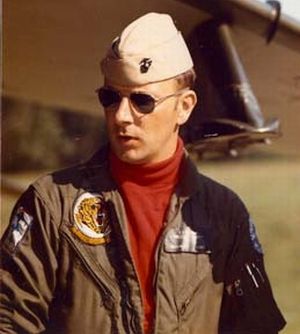 Colonel James Sabow USMC |
(SOMERDALE, NJ) - Colonel James Sabow was someone by all accounts who would never back away from a fight or lie about another. He loved his country, the Marines, his wife and two children and was looking forward to retirement in two years and continuing to fly as a commercial pilot on the West Coast. He was a devout Catholic, a graduate of a Christian Brothers high school and George Washington University. He didn’t know it but events were unfolding in January 1991 that would result in his murder at the hands of others. [1]
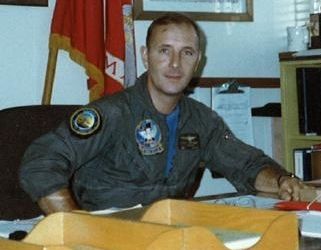 Col Sabow at MCAS El Toro |
On January 10, 1991, Colonel Joseph Underwood, El Toro’s Chief of Staff, telephoned Colonel Sabow who was in Minneapolis visiting his seriously ill mother who was hospitalized at the University of Minnesota Hospital. Underwood told him that the Marine Corps Inspector General was at El Toro accompanied by three assistants. Two days later, on Jan. l2, l99l, Underwood was relieved of his duties as Chief of Staff.
On Sunday, January l3th, Colonel Sabow returned to El Toro from Minneapolis and learned of Underwood's dismissal. On the following day, he phoned his friend Bill Callahan, a flight captain for Air West and a former member of Colonel Sabow’s wing, and they discussed Underwood's situation. Colonel Sabow suspected that there was more than just the alleged misuse of aircraft to result in Underwood's dismissal, and he told this Callahan. They both found it ridiculous that Marine Headquarters would consider this matter of such importance that they would jeopardize the operations of this strategic base during Operation Desert Shield. At least some of the allegations levied against Underwood were of a type that were considered trivial and “common practice” among the flying community. The whole situation seemed bizarre and the behavior of the Marine Corps Inspector General team confirmed this impression. Before the entrance conference with BG Adams, El Toro’s Commanding General, Inspector General Hollis Davidson, went immediately from the aircraft to El Toro’s records department in Bldg. 53 and demanded the hard drives of each command at El Toro. They began with G-1, base command but when they got to G-6 MWR (morale-welfare-recreation), they found the hard drive sabotaged.
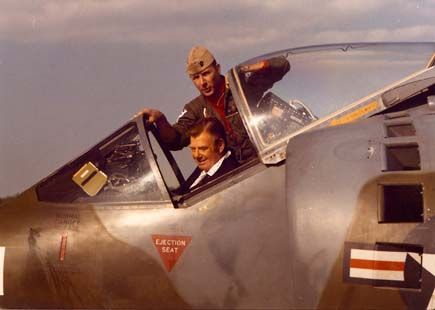 Arthur Godfry, American radio and television broadcaster and |
The MWR data files contained all of the records related to civilian aircraft; the aircraft that had used the base to refuel and drop off tons of cocaine.
The team left Bldg. 53 for the 3rd Marine Aircraft Wing’s Headquarters Bldg. and without requesting access to Colonel Underwood’s office; they literally broke the locked door from its hinges and scoured his office. Colonel Underwood was relieved of his command two days later and a deal was made for him to retire from the Corps.
Colonel Sabow was aware during the days that followed, that many officers were being interviewed by the Inspector General team. He thought it particularly unusual that he wasn't also questioned. His bewilderment ceased when on January l6th, BG Adams informed him that he was now under investigation by the Inspector General and was to meet Lt. Gen Davidson at the legal department the following day.
He immediately went to the El Toro Law Center for guidance. He was told that under the circumstances he should obtain legal representation. Capt. Paul McBride, a young attorney in the legal department, was assigned to represent him. However, since no specific allegations had been made against him, McBride instructed Sabow not to make any statements to the Inspector General during the meeting that was scheduled for the following day.
On January l7th, Colonel Sabow and Capt. McBride arrived at the Law Center and met with the Inspector General and his staff. Sabow was informed that he was under investigation for alleged misuse of government aircraft. No specific charges were made at that time. Capt. McBride informed the Inspector General that Colonel Sabow would not comment but would respond only after detailed charges were made and were studied by the two of them. The meeting lasted approximately l0 minutes, after which Sabow left the room. He was immediately met by an aide of BG Adams who informed him to report at once to Adams' office. In a few moments, Colonel Sabow walked into BG Adams' office. He was relieved of his duties.
He went to his office where he informed his staff of what had just happened. He removed a few personal items from his office and drove home. He had just finished telling his wife of what happened when personnel from G-7, communications, arrived at the Sabow quarters and removed the Autovan phone system and his cellular phone.
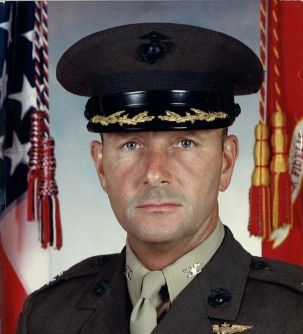 Col Sabow flew more than 200 missions in Vietnam |
Colonel Sabow was dumbfounded. He could hardly comprehend that he was being treated this way, by the very Corps to which he had devoted his entire adult life. Sara Sabow considered all that was occurring a tragic mistake that at any moment would right itself. How could such a thing happen to her husband, known by everyone as a “straight-arrow,” one who stayed well to the right of center on all matters of personal deportment and the code-of-conduct?
Over the next four days, Colonel Sabow had several meetings with Capt. McBride. Several general areas of inquiry were provided to McBride by the Inspector General. According to McBride, these areas of inquiry would have been easily rebutted by Colonel Sabow, who could have provided “hard” data, i.e., signed orders and log books. Only one incident, though rebuttable, was not sheltered by hard data.
That concerned the transportation of several articles which had been carried on an authorized training flight to Spokane, Washington. The articles had no real monetary value, but were given by Colonel Sabow to his son, who attended college in Spokane. They included two posters, several carpet remnants, a pair of twenty year old stereo speakers, and two plastic beer advertisements.
In the official investigation and subsequent reports, these articles were repeatedly referred to as “furniture,” even after the Sabow family provided the Marine Corps with a list of the articles as well as pictures of them. Colonel Sabow relied on the pilot to approve or disapprove of the transportation of anything on the plane since he was not yet certified to pilot this type of plane.
On Friday, January l8th, Inspector General Davidson, conducted an exit interview at which time all the allegations were handed over to BG Adams. Lt.Col Jim Walker, the Military Justice Officer at El Toro, later told Steve Chavez, of the American Legion, “We didn't have shit on Colonel Sabow!” Capt. McBride informed Dr. David Sabow that no further investigation was to be carried out on Colonel Sabow.[2]
BG Adams could have picked-up his phone and called Colonel Sabow with the good news: “Jim, come on back to work. The IG found no support for the allegations of misuse of government aircraft.” But, he didn’t. He had to know that the Sabow family was concerned about the false allegations. Colonel Sabow had retained a military attorney and was prepared to take the matter to a court martial, if formal charges were filed. According to his own statements, BG Adams was not only his superior officer but a friend. Once he learned that Colonel Sabow was cleared of all allegations of misconduct by the IG, why didn’t he call Colonel Sabow in his quarters to give him the good news? If Friday was inconvenient, BG Adams could have placed a call on Saturday, Sunday or even Monday. Nothing. We found this strange. Col. Sabow had let it known that he would demand a court martial if formal charges were filed.
On Monday evening, Sara Sabow witnessed a heated argument between Colonel Underwood, El Toro’s Chief of Staff and his next door neighbor who had been relieved of his duties by BG Adams earlier in January, and her husband. Underwood told Sabow that he couldn’t demand a court martial since CIA proprietary aircraft that were shipping weapons to the Contras were returning with cocaine.
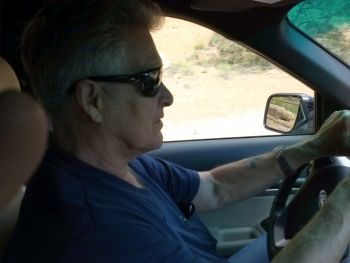 Former CIA contract pilot, Robert 'Tosh' Plumlee |
Robert Tosh Plumlee, a CIA contract pilot, told us that he flew over 4 tons of cocaine into El Toro in the 1980s.
After Colonel Underwood left, Colonel Sabow called a good friend, retired Assistant Commandant of the Marine Corps, General J.K. Davis. The Pacific Bell records record the duration as being one hour and five minutes. Davis promised to call Adams; he apparently didn’t know the IG had found no basis for the allegations.
Later, General Davis told Dr. David Sabow, his younger brother, that Jimmy was not going to retire but demand a court martial and, “I’ll tell them about illegal aircraft activity”. [3].
The call from Col. Sabow to General Davis was late at night on the Martin Luther King holiday. Did Davis call Adams as promised? We don’t know. Four days had passed since the exit conference with Lt. Gen. Davis. Still no call from BG Adams
The rub was that Colonel Sabow now knew about the illegal narcotrafficking of cocaine. He wouldn’t let this go. Would he report this illegal activity to the IG or the FBI or even the media? The influx of cocaine into the US and the widespread use of crack cocaine in the black community killed thousands of Americans. If the media discovered that military bases were used to support narcotrafficking, the scandal would have blown the Bush administrations off the map. This use of aircraft to resupply the Contras was a covert operation run by the National Security Council. Narcotrafficking is a felony. This was far worse than Watergate. If the media knew of the flights into El Toro, March AFB, Homestead AFB and possibly other military installations, the trail could have lead to the NSC and to the possible impeachment of President Bush.
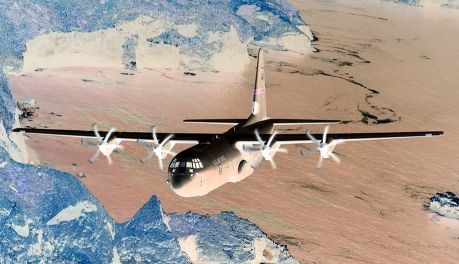
The involvement of the Contras in drugs was not a new story. The Senate Committee Report on Drugs, Law Enforcement and Foreign Policy chaired by Senator John F. Kerry, reported in 1986 that “it is clear that individuals who provided support for the Contras were involved in drug trafficking, the supply network of the Contras was used by drug trafficking organizations, and elements of the Contras themselves knowingly received financial and material assistance from drug traffickers. In each case, one or another agency of the U.S. government had information regarding the involvement either while it was occurring, or immediately thereafter.”
What was breaking news was that US military bases were used to funnel cocaine into the country. This would have given a whole new meaning to the ‘War on Drugs.’ Colonel Jim Sabow was stepping on some very big toes.
BG Adams and Colonel Underwood were both found guilty of personal misuse of government aircraft and other offenses; both were forced to retire in 1991. Colonel Sabow was an innocent party caught up in the intrigue of an illegal covert operation that the Marine Corps wanted to shut down. The Corps had to know that the base was used for narcotrafficking to support the Contras. The Contra War ended in June 1990 and the shipments kept on coming. The Contras had a good thing going.
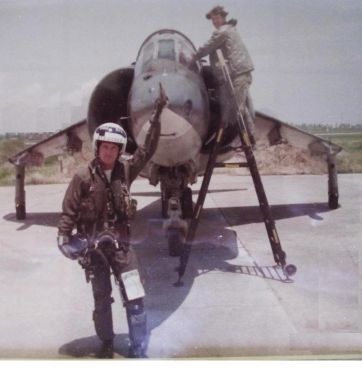 Col Sabow was instrumental in developing |
The IG may have known Colonel Sabow was not guilty within hours or days. Lt. General Davison had the exit conference with BG Adams on Friday, January 18th. There is no record of the exit conference, but Adams may have been told that Underwood has to go but bring Sabow back to work. Adams runs the situation by those responsible for covert operation within HQMC. There are concerns about Colonel Sabow. What does he know? Will he cause trouble? Underwood may have been ordered to tell Sabow about the cocaine shipments. There's no logical reason for Colonel Underwood to tell Colonel Sabow about an illegal narcotrafficking of cocaine into the US. It directly implements Underwood in a felony. Bring Colonel Sabow into the web may have been the motive. See what his reaction will be. Can he be compromised? Colonel Sabow immediately calls Gen. Davis. He tells Davis that he will blow the whistle at his court martial (there was never going to be one). This was more than a scandal involving the Corps. The NSC knew about the drugs. Bush had to know. Bush is POTUS in 1990. If the media broke this story, tracks it to the NSC (not that difficult) and to Bush, then he could be impeached. This is political dynamite. In comparison, Richard Nixon’s Watergate Scandal is literally child’s play. Thousands of Americans are killed from the influx of cocaine and crack cocaine in the 1980s. All this is done to support a covert operation to overthrow the government in Nicaragua in direct violation of the wishes of Congress and the public.
It’s not hard to believe that an order is issued to take out Colonel Sabow before he can talk to others. With 28 years in the Corps, Colonel Sabow was unlikely to go to the media but he was a threat to contact the FBI, the DEA, the local US Attorney and others. If this continues too long, the risk of exposure and a media investigation increases.
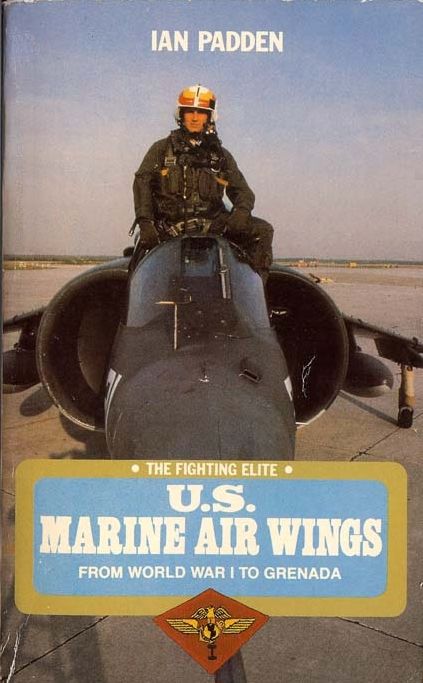 Col Jim Sabow, shown on ths book's cover, |
On January 22, 1991, Colonel Jim Sabow arose between 0530 and 0630. Sara did not feel well and remained in bed and dozed. She was aware of many telephone calls while she lay resting. Deirdre, his daughter, left for high school at 0720. She had talked with her father while she prepared her lunch. He seemed cheerful, talkative and relaxed. She observed him as having already showered and shaved.
Sara joined Colonel Sabow in the living room just after Deirdre left for school. He showed Sara the morning newspaper that contained an article about Colonel Underwood being relieved of his command. Underwood had called Sabow at about 0700 and told him of the article. He also stated that Colonel Sabow would be in the news the very next day. When Jim told Sara of Underwood's warning, Sara said that was absurd for Underwood had no way of knowing what would appear in the following day's newspaper.
Capt. McBride recalls three separate telephone conversations he had with Colonel Sabow that morning. The last one was made by McBride at 0810 and lasted ten minutes.
At 0830 Sara finished talking to Sue Bloomer, the wife of a retired general. She checked her time since she wanted to attend Mass at the Catholic Church located a short distance off the base. She explained to Jimmy that since it was already 0830 she would miss most of the Mass but that she would go anyway and receive Holy Communion.
Exactly at the moment when she was opening the front door to leave, the phone rang and she stopped to observe Colonel Sabow who was sitting in his leather easy chair in front of the TV, which was approximately twelve feet from the front door.
Colonel Sabow answered saying, "Colonel Sabow...(pause)...Colonel Sabow...(pause)...This is Colonel Sabow."
These were the last words she would ever hear husband utter. Anything further said by Jimmy is unknown for just at that moment Sara closed the door behind her as she left for Mass. The person who placed this call to Colonel Sabow has never acknowledged making that final phone call.
Colonel Sabow followed his practice of placing the TV on mute when expecting a visitor. He had been watching the major media news coverage of the situation in the Persian Gulf since wake-up. Someone had called; he was expecting a visitor. After he put the television on mute, he arose from his easy chair, left his house through the patio door.
He walked the length of the patio, called the dogs, which were in the back yard; enclosed them in the garage. Colonel Underwood was deathly afraid of Sabow’s German shepherds and always phoned before visiting him. Otherwise the dogs spent their entire day in the backyard or in the house. The only thing that is certain is that Colonel Sabow had no clue that his life was at risk.
The unexpected blow to the right side of the head was violent, resulting in unconsciousness. He was still alive on the ground but not for long. The blow caused a massive depressed occipital skull fracture along with one or more fractures extending through the base of his skull (basilar skull fractures). Occipital skull fragments penetrated into the back of his brain. He was near death, aspirating blood from a wound in his pharynx that resulted from the basilar skull fracture. The tracheae, bronchi, bronchioles and alveoli were filled with blood, doubling the weight of the right lung. There was swelling behind the right ear covering the back of the skull.[4]
Colonel Sabow had been taken by surprise. While lying on the ground, someone with knowledge of his home, obtained the shotgun from his bedroom, forced the weapon into the mouth of the unconscious Marine and discharged it. The individual who did this was either not familiar with the shotgun or was in a hurry and didn’t see the box of solid shot rounds nearby. Someone who was about to commit suicide would go for the solid round shot, not the birdshot fired from the shotgun.
The Orange County Sheriff/Coroner signed a death certificate stating the manner of death as suicide. But, it doesn’t end there. Dr. David Sabow pursues an independent investigation for the next 23 years. There’s solid evidence of homicide, crime scene tampering and conspiracy to commit murder. All felonies. Federal agents are involved. An NCIS cold case investigation reaffirms suicide, despite a sworn affidavit by an internationally renowned pathologist who cites homicide and crime scene tampering. A Marine MP at the crime scene refuses to change this report about 3 unidentified men who flash government badges and clear the crime scene. The MP is forced out of the Corps within months and now fears for his life. This story is worst than a bad penny. It’s a nightmare that never ends.
References:
[1] He didn’t know it but events were unfolding in January 1991 that would result in his murder at the hands of others: Colonel James E. Sabow was assigned to El Toro in 1990. He was in charge of air operations of Marine Air, Western Area. Colonel Sabow had to know about the covert operations at El Toro, involving CIA proprietary airlines. Sabow found out the night before his death from Colonel Underwood, his next door neighbor, that these flights involved the transport of cocaine into the country. He refused to accept false charges of personal misuse of government aircraft and retire early. Afte a heated argument with Colonel Underwood on January 21st, he called General J.K. Davis (retired Asst. Commandant of the Marine Corps) and in a 65 minute telephone call he said he would not accept responsibility for any personal misuse of aircraft and that if they persisted he, “would demand a court marshal and divulge all of what he had learned and suspected of illegal and criminal use of government aircraft.”
[2] No further investigation was to be carried out on Colonel Sabow: “A few loose ends needed to be cleared up, and that was all,” McBride told Dr. David Sabow on the day after Colonel Sabow's death. Both McBride and Cheryl Baldwin, the Naval Investigative Service (NIS) case officer, informed him that the NIS was to continue investigation of Colonel Underwood, but not of Colonel Sabow. In addition, Inspector General Davidson stated under oath that when he left El Toro, he did not order any further investigation of Colonel Sabow. Dr. Sabow learned that the Inspector General went to El Toro to confront BG Adams and his Chief of Staff, Colonel Joseph Underwood, about their activities, under the guise of their using government aircraft for personal purposes, but in truth for much more sinister reasons. Their real intent led them to literally break down the door of Underwood’s Headquarters office as they were searching for critical notes of covert activities that were kept by Underwood. This occurred shortly after the IG team left the records department where they discovered the “hard drive” of G-6, Morale, and Welfare & Recreation (MWR) was purged. This department kept all the refueling records for non-military aircraft that went through El Toro.
[3] Davis has told Dr. Sabow that Jimmy was not going to retire but demand a court martial: Interview with Dr. David Sabow. According to Dr. David Sabow, Colonel Sabow first learned that former military aircraft transferred to the CIA proprietary airlines were flying illegal drugs into the US the night before he was killed: Colonel Underwood told Jim that the C-130s were not simply transporting weapons but were returning from Central America and Mexico with drugs. Sabow threatened Underwood and told him that he would not tolerate this and he would divulge all that he knew. In fact, Sabow then called his retired mentor, Assistant Commandant of the Marine Corps, General J.K. Davis and told General Davis what he was about to do. An International Response Team (“IRT”) team was mobilized out of San Diego and Colonel Sabow was assassinated the following morning. Orders, presumedly originating from Washington, were to defy DOD (SECNAVINST) regulations and send his body to Orange County Sheriff/Coroner rather than to the nearby Balboa Naval Hospital for post mortem examination. The Orange County Medical Examiner determined the manner of death as suicide. Despite his profession as a board certified neurologist and involved in forensic neurology, Dr. Singhania refused to discuss the findings with him. It was over one year before Dr. Sabow received the autopsy report. Prior to seeing the autopsy report, he had serious suspicions that his brother was murdered. This was based on sound circumstantial evidence. But after studying the post mortem findings and subsequently reviewing autopsy and crime scene photos, he knew beyond a doubt that his brother had been murdered. He also knew that there was an extensive cover-up.
[4] He was near death due to the massive brainstem trauma in which agonal hyperventilation characteristic of this type of injury occurs: Interview with Dr. David Sabow who has conducted extensive scientific analysis of the pathology of his brother’s murder.
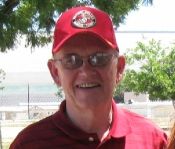
Bob O’Dowd is a former U.S. Marine with thirty years of experience on the east coast as an auditor, accountant, and financial manager with the Federal government. Half of that time was spent with the Defense Logistics Agency in Philadelphia. Originally from Pennsylvania, he enlisted in the Marine Corps at age 19, served in the 1st, 3rd, and 4th Marine Aircraft Wings in 52 months of active duty in the 1960s. A graduate of Temple University, Bob has been married to Grace for 31 years. He is the father of two adult children and the grandfather of two boys. Bob has a blog site on former MCAS El Toro at mwsg37.com. This subject is where Bob intersected with Salem-News.com. Bob served in the exact same Marine Aviation Squadron that Salem-News founder Tim King served in, twenty years earlier. With their combined on-site knowledge and research ability, Bob and Tim and a handful of other ex-Marines, have put the contamination of MCAS El Toro on the map. The base is highly contaminated with TCE, trichloroethelyne
You can email Bob O’Dowd, Salem-News.com Environmental and Military Reporter, at this address: consults03@comcast.net
 |
 |
 |
Articles for January 24, 2014 | Articles for January 25, 2014 | Articles for January 26, 2014


Quick Links
DINING
Willamette UniversityGoudy Commons Cafe
Dine on the Queen
Willamette Queen Sternwheeler
MUST SEE SALEM
Oregon Capitol ToursCapitol History Gateway
Willamette River Ride
Willamette Queen Sternwheeler
Historic Home Tours:
Deepwood Museum
The Bush House
Gaiety Hollow Garden
AUCTIONS - APPRAISALS
Auction Masters & AppraisalsCONSTRUCTION SERVICES
Roofing and ContractingSheridan, Ore.
ONLINE SHOPPING
Special Occasion DressesAdvertise with Salem-News
Contact:AdSales@Salem-News.com

googlec507860f6901db00.html

Terms of Service | Privacy Policy
All comments and messages are approved by people and self promotional links or unacceptable comments are denied.
Cookie March 10, 2021 7:00 am (Pacific time)
It makes me sad to think that this crap still happens today. The Swamp in DC is so full of big old Turds that make it impossible to Flush!!!! God help the United States of America.
[Return to Top]©2026 Salem-News.com. All opinions expressed in this article are those of the author and do not necessarily reflect those of Salem-News.com.